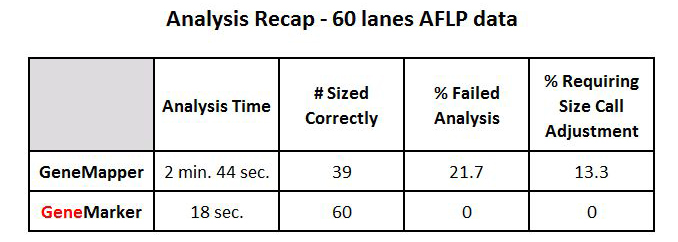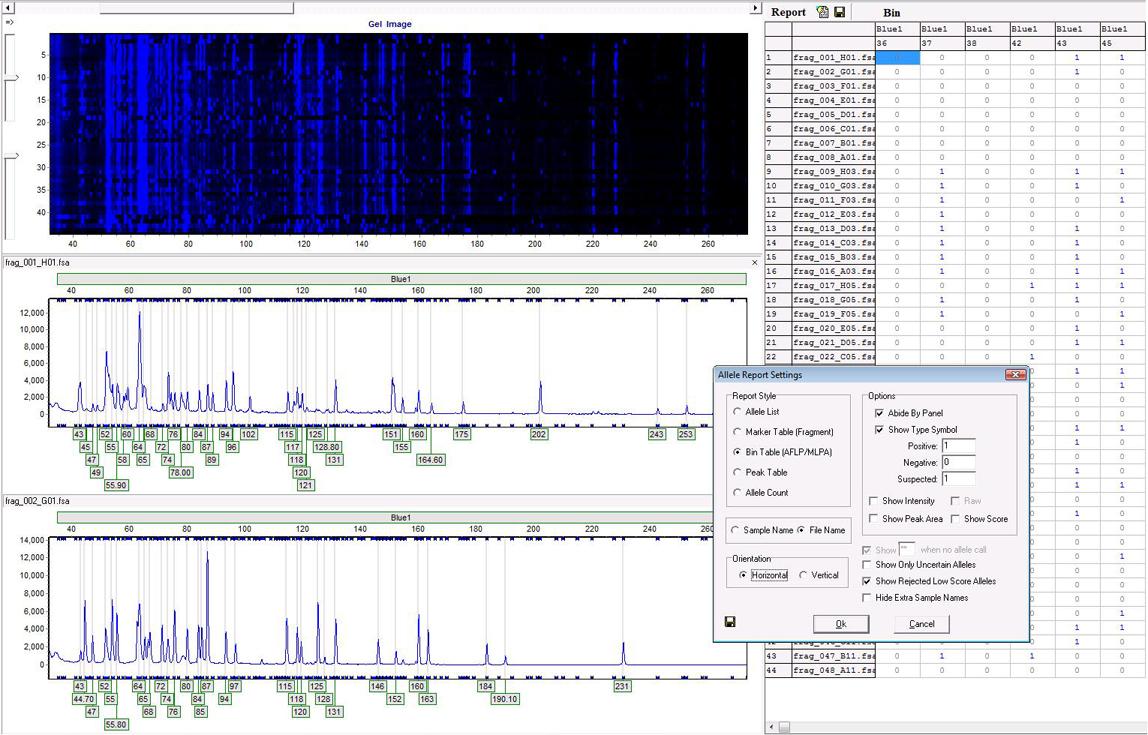AFLP Analysis
Amplified Fragment Length Polymorphism (AFLP) is a PCR-based genetic fingerprinting technique developed by KeyGene. AFLP technology has the capability to detect various polymorphisms in different genomic regions simultaneously, is highly sensitive and reproducible, and can generate large numbers of marker fragments for any organism, without prior knowledge of the genomic sequence. As a result, AFLP has become widely used for the identification of genetic variation in strains or closely related species of plants, fungi, animals, and bacteria. AFLP has also been used in population genetics to determine slight differences within populations, and in linkage studies to generate maps for QTL analysis.
GeneMarker is a biologist friendly alternative to Applied BioSystems GeneMapper® software, providing increased analysis speed and accuracy (see figure 1). GeneMarker software is also compatible with outputs from all major sequencing systems, including ABI®PRISM, Applied Biosystems® SeqStudio and Spectrum Compact CE genetic analyzers, as well as custom primers or commercially available 4-6 dye chemistries. GeneMarker software's Large Fragment Sizing Technology expands and reduces the cost of the AFLP technique by affording extended multiplexing opportunities. Figures 2 and 3 provide an overview of AFLP analysis in GeneMarker software.

Figure 1: The software features high efficiency allele calling, adjustable parameters and various reporting options including a trace comparison report. Comparison courtesy of Meghan Avolio, Yale University, Department of Ecology and Evolutionary Biology, New Haven CT 06520
Allele Report displaying peak intensities

Figure 2: The Peak Table report style (right side) displays peak intensities. The peaks with a green symbol are high confidence and those with a yellow symbol are of lower confidence.
Report displaying presence and absence of alleles

Figure 3: The allele report designed for AFLP analysis (Bin Table on right side) outputs a 1 or a 0 to represent the presence or absence of peaks. The symbol ‘?’ is used to represent questionable peaks, which the user is advised to check in the electropherogram.
Application Notes:
Read Articles:
MLPA® is the registered trademark of MRC Holland













